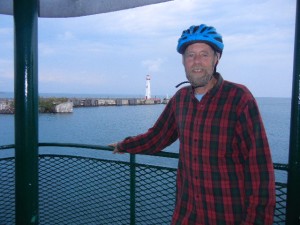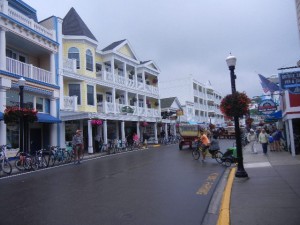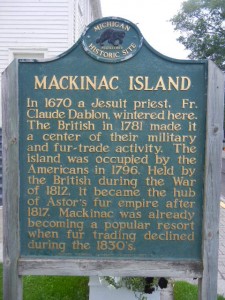27-30 August: On our way through Michigan’s Upper Peninsula, we camped for two nights near Lake Superior and two nights near Lake Michigan. Pictured Rocks National Lakeshore stretches some 40 miles along the southern shore of Lake Superior. Next to our campground was the historical site of Bay Furnace, the ruins of a blast furnace used to produce iron from 1870 until 1877, when it was destroyed by fire. Bay Furnace is one of only two remaining examples of the 29 blast furnaces from that period in Upper Michigan. Its location provided a sheltered anchorage for ships and access to abundant maple and beech trees for producing the charcoal that fueled the furnace.
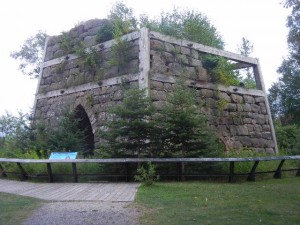
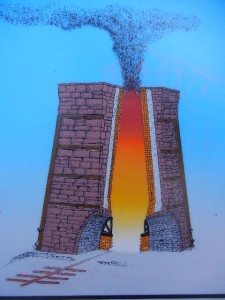
We spent a memorable day hiking around a loop that included about four miles of the Lakeshore Trail (also part of the North Country Trail) in one of the most dramatic parts of the Pictured Rocks shoreline, between Chapel Rock (an interesting rock pillar with arches through it and a white pine tree growing on top of it) and the Mosquito River. That section of trail follows the edge of the cliffs, with frequent views of rocky headlands, coves, arches, and grottos formed from colorful sedimentary rocks.
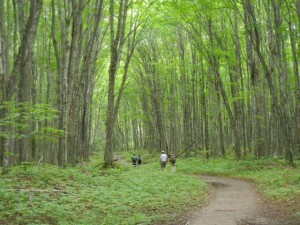
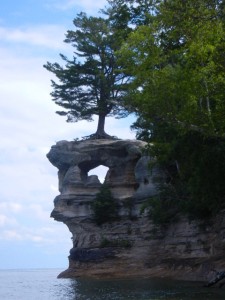
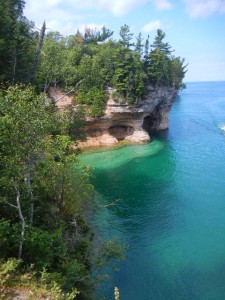
Our next campsite was on Brevoort Lake, near the shore of Lake Michigan. On the day we arrived there we went for a short hike on the nearby Ridge Trail, which followed the narrow crest of a steep-sided and very winding ridge next to the campground (another glacial esker, no doubt). Amy swam in Lake Michigan after having swum in Lake Superior the day before, and began to wonder how many of the remaining three Great Lakes she might be able to swim in before we get home. The water was definitely warmer in Lake Michigan than in Lake Superior (Paul decided to wait for sunnier and warmer weather for him to take the plunge). Our principal motive for camping at Brevoort Lake, though, was to camp close to Mackinac Island.
Mackinac Island has long been valued by Native Americans and Europeans alike for its strategic location in the Mackinac Straits where Lake Michigan flows into Lake Huron, close to Lake Superior, providing water routes to the south, east, and west. For the Anishnaabeck people (Ottawa, Ojibway, and Potawatomi tribes) the island was used as a neutral location for trading, fishing, and ceremonial burials rather than for permanent settlements. During the late 1600s through late 1700s, French trappers, traders, and missionaries used the island until it came into English possession following the French and Indian War. Then the Americans took possession after winning the Revolutionary War. England took the island back in a surprise raid during the early part of the War of 1812, but it reverted to America again in 1815 when the war ended. The island became a popular resort destination soon afterward (well before the Civil War). In the 1890s, cars were banned, and they are still banned today. We took a ferry from St. Ignace on the mainland to Mackinac Island and took our bikes. There are paved roads, but they are used solely by bicycles and horses, by both residents and tourists (including the eight-mile-long Michigan State Highway 185 that we rode around the entire perimeter of the island). Besides the typical tourist amenities such as restaurants, hotels and cottages, museums, and gift shops, Mackinac has a number of hand-made fudge shops, a local specialty.
